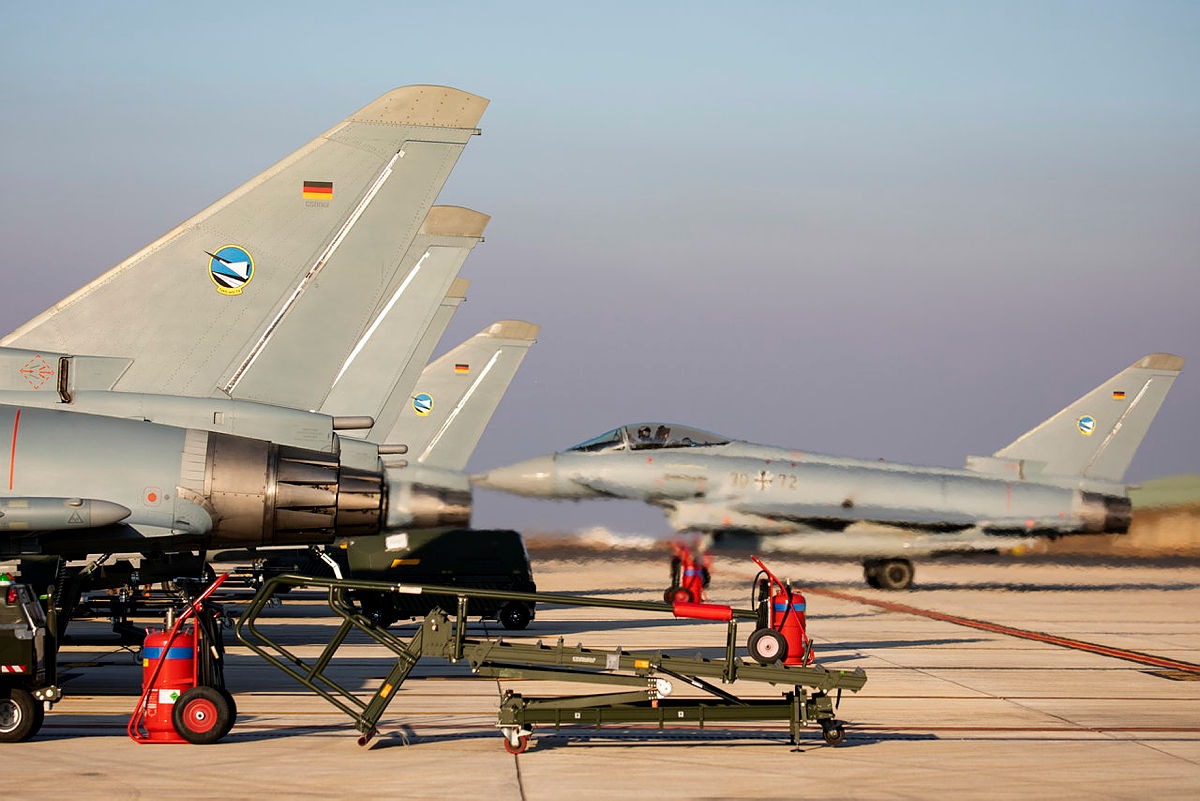
Sea state
Following its explosive demonstrations of military might in the Taiwan Strait earlier this month, the Chinese navy this week triggered anxieties about its expansion once again. Photographs posted to Chinese social media platform Weibo showed five ships under construction at Dalian Shipyard in northeastern China. They are believed to be Type 052DL destroyers—equivalent to the US Navy’s Arleigh Burke class—equipped with state-of-the-art radar reportedly designed to detect stealth aircraft. Chinese state media claims the country’s massive naval build-up is justified by China’s requirement to ‘safeguard its sovereignty and development interests’, raising concerns about China’s long-term agenda.
Elsewhere in the Indo-Pacific, the Royal Australian Navy tested its own state-of-the-art radar technology. While participating in Exercise Pacific Dragon, the guided missile destroyer HMAS Sydney used its Aegis combat system to intercept an aerial drone, according to a Defence press release. Pacific Dragon involved the Australian, US, Japanese, Korean and Canadian navies and aimed to demonstrate the cooperation between Indo-Pacific nations that underpins not only multinational exercises but also technology-sharing agreements featuring systems such as Aegis.
Flight path
The three-week biennial Exercise Pitch Black is underway for the first time since 2018, with air force personnel from 17 countries participating in drills and training over northern Australia. Around 100 aircraft, including Australia’s F-35s, Su-30s from India, F-2s from Japan and Eurofighter Typhoons from Germany and the UK, are conducting a wide range of exercises involving manoeuvres such as mid-air refuelling. The involvement of Germany, Japan and South Korea in Pitch Black for the first time signals their increased focus on increasing interoperability with key allies in the Indo-Pacific amid rising tensions in the region.
The US Air Force has awarded contracts worth a total of around US$4.9 billion to Boeing, General Electric, Lockheed Martin, Northrop Grumman and Pratt & Whitney to develop an ‘adaptive’ engine for the next generation of US fighter jets. The decision came after USAF officials raised concerns that opting against a full replacement of the F-35 engine could lead to a collapse of the domestic advanced-propulsion industrial base. If development is successful, an adaptive engine has the potential to extend the power and range of current and future US fighter jets.
Rapid fire
Early this month, the Australian Army issued a new strategy to strengthen its robotics and autonomous systems capabilities. The document, which builds on the first iteration of the strategy in 2018, aims to develop operational advantages on the battlefield by leveraging robotics, autonomous systems and artificial intelligence. Chief of Army Lieutenant General Simon Stuart said that the use of these technologies will ‘continue to evolve the way Army trains and fights’ by enabling increased tempo and faster decision-making, and reducing risks.
According to an anonymous official, the Turkish government has quietly supplied 50 used Kirpi vehicles to the Ukrainian military. Kirpi, which means ‘Hedgehog’ in Turkish, is a mine-resistant, ambush-protected vehicle manufactured by Turkish company BMC. Equipped with a chemical, biological, radiological and nuclear protection system and small arms embrasures, the Kirpi also provides protection against mine and ballistic threats. According to the source, the deal was signed between two governments without any involvement of BMC, and more deliveries are expected to follow.
Final frontier
NASA’s Space Launch System rocket and uncrewed Orion spacecraft for the Artemis I moon mission arrived at the launch pad at Kennedy Space Center in Florida last week. Engineers and technicians are configuring the systems in preparation for a launch on Monday. The plan is for the rocket to orbit the moon and splash back down 42 days later. The SLS provides long-term exploration potential, facilitating the Artemis mission of returning people to the moon and ultimately travelling on to Mars.
Since Russia’s ambiguous announcement that it would quit the International Space Station ‘after 2024’, Russian space agency Roskosmos has unveiled a physical model of a proposed Russian space station. Nicknamed ‘Ross’ by Russian state media, it would be launched in two phases on yet to be specified dates. Roskosmos said the new station will provide a wider view for Russian cosmonauts to monitor the earth. The West’s sanctions against Russia over its invasion of Ukraine have accelerated Moscow’s efforts to reduce dependence on the West in various domains, including space.
Wired watchtower
The Solomon Islands government has signed a $100 million deal with Chinese telecommunications giant Huawei to build 161 mobile phone towers across the nation. The deal signals increased economic ties between the Solomons and China and follows the two nations’ signing a security pact earlier this year. Despite Australia’s attempt to curtail Chinese influence over the Solomons by backing Telstra’s acquisition of the Pacific telco Digicel, and a deal to fund the installation of six telecom towers itself, China is steadily increasing its economic hold on and influence in the Pacific.
Australia’s $1.7-billion, 10-year cybersecurity strategy is set to undergo a significant overhaul. The government intends to strengthen ties with Quad partners and reduce Australia’s reliance on China for critical technologies, and aims to address cybersecurity workforce shortages to enhance sovereign capabilities. The reinvestment in the nation’s cybersecurity strategy reflects Australia’s recognition of the necessity for a whole-of-nation effort to counter cyber threats.

